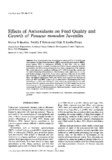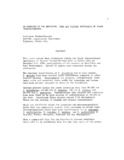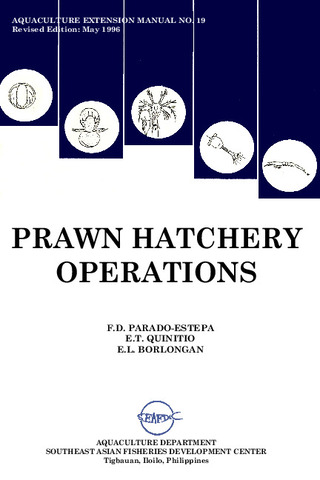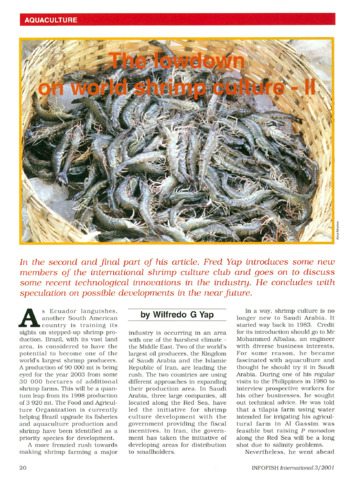Effects of antioxidants on feed quality and growth of Penaeus monodon juveniles
Share
Abstract
Four practical diets were formulated to contain 0.05%, of the following antioxidants: butylated hydroxytoluene (BHT), butylated hydroxy anisole (BHA), propyl gallate (PG) or ethoxyquin (ETHQ). A fifth diet, with no added antioxidant, served as a control. The diets were fed to Penaeus monodon juveniles to determine the effects of antioxidants on feed quality and growth of the animals. The results showed no significant difference (P> 0.05) between the control and the feeds containing antioxidants in 2-thiobarbituric acid values after 0, 30, 60, and 90 days storage, respectively. There was a significant difference by the 120th day of storage, but no signs of physical deterioration were observed in any of the diets. The highest weight gains (704% and 742%) were obtained with shrimps fed diets with BHT and BHA, respectively, as antioxidants. Hepatopancreatic lesion formation was evident with shrimps fed diets containing antioxidants but not with shrimps fed a diet without antioxidant. Shrimps fed with BHT-added feed showed fewest lesions in the hepatopancreas. Although all shrimp samples given feed containing PG and ETHQ showed lesions, these were patchy in nature and did not affect the growth rates of the animals.
Suggested Citation
Bautista, M. N., Subosa, P. F., & Lavilla-Pitogo, C. R. (1992). Effects of antioxidants on feed quality and growth of Penaeus monodon juveniles. Journal of the Science of Food and Agriculture , 60(1), 55-60. https://doi.org/10.1002/jsfa.2740600110
Subject
Taxonomic term
Collections
- AQD Journal Articles [1249]
Related items
Showing items related by title, author, creator and subject.
-
An overview of the nutrition, feed and feeding techniques of prawn penaeid/shrimps
Piedad-Pascual, Felicitas (Philippine Council for Aquatic and Marine Research and Development, 1989)This paper echoes what transpired during the first International Conference of Penaeid Prawns/Shrimps held in Iloilo City in December 4-7, 1984, particularly on the Nutrition nd Feed Development. Around 25 papers were ... -
Prawn hatchery operations
Parado-Estepa, Fe D.; Quinitio, Emilia T.; Borlongan, Emeterio L. (Aquaculture Department, Southeast Asian Fisheries Development Center, 1996-05)The manual, an updated version of the 1984 SEAFDEC/AQD manual, presents the underlying principles and step-by-step instructions of prawn larval and post-larval rearing. The techniques described are not only applicable to ... -
The lowdown on world shrimp culture - II
Yap, Wilfredo G. (INFOFISH, 2001)This paper introduces some new members of the international shrimp culture club and goes on to discuss some recent technological innovations in the industry, particularly the polyculture of tilapia (mainly Oreochromis ...




